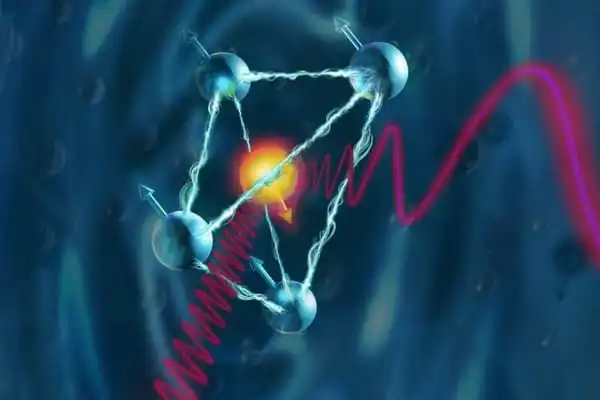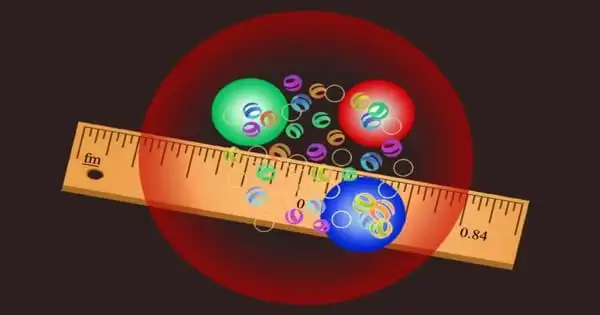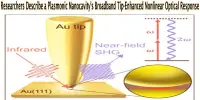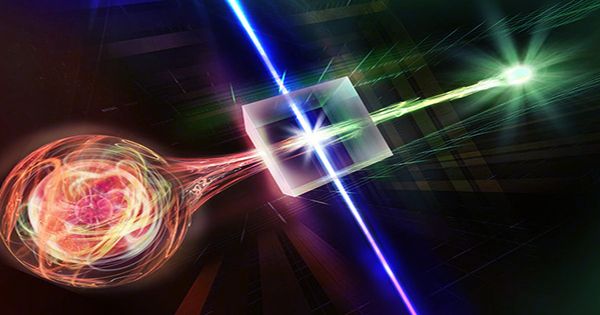Data held in ytterbium atom spin states can be communicated to adjacent atoms in a crystal matrix. Caltech engineers have devised a method for quantum storage that could open the way for the establishment of large-scale optical quantum networks.
Nuclear spins – the angular momentum of an atom’s nucleus – oscillate collectively as a spin wave in the new system. This collective oscillation effectively links together multiple atoms to store data.
Quantum memory is the quantum-mechanical equivalent of conventional computer memory in quantum computing. Unlike conventional memory, which stores information as binary states (represented by “1”s and “0”s), quantum memory stores a quantum state for subsequent retrieval. Qubits, which provide useful computing information, are stored in these states.
The research, outlined in a study published in the journal Nature on February 16, employs a quantum bit (or qubit) produced from an ion of ytterbium (Yb), a rare earth element also employed in lasers. The researchers, directed by professor of applied physics and electrical engineering Andrei Faraon (BS ’04), implanted the ion in a transparent crystal of yttrium orthovanadate (YVO4) and altered its quantum states using a mix of optical and microwave forces. The Yb qubit was then utilized to alter the nuclear spin states of several surrounding vanadium atoms in the crystal.
We devised new approaches comparable to those used in NMR machines used in hospitals to store quantum information in nuclear spins. The key challenge was modifying existing procedures to work without a magnetic field.
Joonhee Choi
“Based on earlier research, we knew that solitary ytterbium ions were great candidates for optical quantum networks, but we wanted to connect them with more atoms. In this research, we show that “Faraon, a co-corresponding author on the Nature paper, explains.
The device was created at Caltech’s Kavli Nanoscience Institute and subsequently tested at extremely low temperatures in Faraon’s lab. Nuclear magnetic resonance approaches inspired a new methodology for using entangled nuclear spins as a quantum memory (NMR).
“We devised new approaches comparable to those used in NMR machines used in hospitals to store quantum information in nuclear spins,” explains Joonhee Choi, a postdoctoral fellow at Caltech and co-corresponding author of the paper. “The key challenge was modifying existing procedures to work without a magnetic field.”
The crystal lattice-prescribed positioning of vanadium atoms around the ytterbium qubit is a distinguishing feature of this device. Every qubit measured by the team had an identical memory register, which meant it would store the same information.

“The capacity to construct a technology reproducibly and reliably is critical to its success,” says first author and graduate student Andrei Ruskuc. “In the scientific context, this provided us with unprecedented insight into the microscopic interactions between ytterbium qubits and vanadium atoms in their environment.”
This study is part of Faraon’s lab’s larger endeavor to establish the groundwork for future quantum networks.
Quantum networks would connect quantum computers using a mechanism that operates at the quantum level rather than the classical level. In principle, quantum computers will one day be able to perform some functions quicker than conventional computers by taking advantage of quantum physics’ peculiar qualities, such as superposition, which allows quantum bits to store information as a 1 and a 0 at the same time.
Engineers would hope to be able to connect several quantum computers to share data and collaborate, as they can with classical computers, creating a “quantum internet.” This would allow for a variety of applications, such as the capacity to solve computations that are too massive for a single quantum computer to handle, as well as the development of unbreakably secure communications utilizing quantum cryptography.
A nuclear chain reaction happens in nuclear physics when a single nuclear reaction triggers an average of one or more subsequent nuclear reactions, potentially leading to a self-propagating sequence of these processes. A chain reaction is a process in which neutrons generated during fission cause another fission in at least one additional nucleus. This nucleus, in turn, creates neutrons, and the cycle continues. The process can be controlled (nuclear power) or uncontrolled (nuclear power) (nuclear weapons).
















